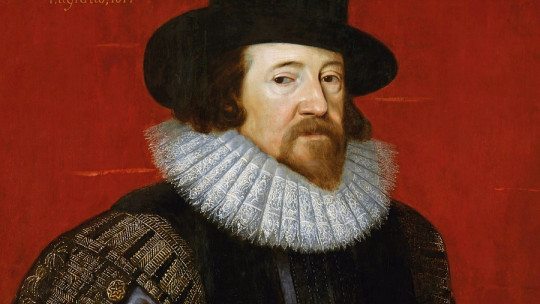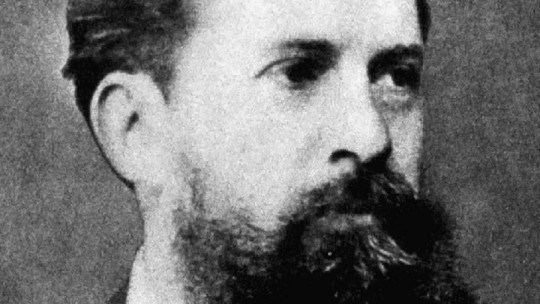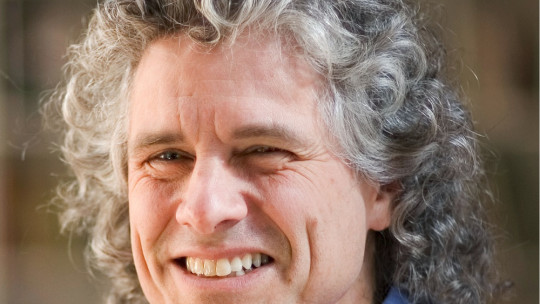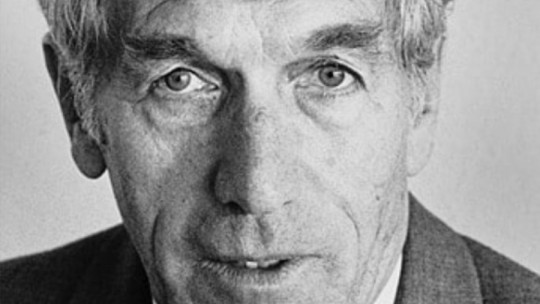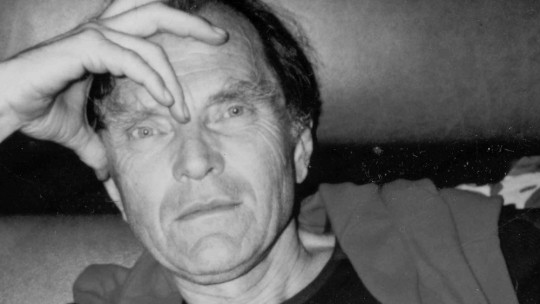
When we think about science as a whole we can, in general, get a somewhat romantic idea of something unified in its conception despite being able to be divided into multiple disciplines, with great coincidences in how the data are interpreted and what methodology is used with it. in order to try to explain reality. However, this is not the case: throughout history There have been numerous ways of seeing and doing science passing among others through empiricism, rationalism or scientific realism.
Each of these perspectives has different implications at the research level and has different considerations regarding what things are, how they should be investigated and even what effect belief in a certain theory has on the observed phenomena. One of the most critical views is that of Paul Feyerabend’s epistemological anarchism. It is about this author that we are going to talk about in this article, in which we are going to carry out a short biography of Paul Feyerabend
Brief biography of Paul Feyerabend
Paul Karl Feyerabend was born in the city of Vienna in 1924, being the only child of a middle-class family in a time characterized by famine after the First World War and the inflation that hampered the country’s economy. With a civil servant father and a seamstress mother, he was born at an advanced age due to the difficulties of life at that time.
Already from childhood he showed great intelligence. He studied at a Realgymnasium in his hometown, learning natural sciences, Latin and English and obtaining very high grades. Likewise, in some subjects such as physics and mathematics he seemed to have a greater command than even his own teachers. Also would display a certain eccentric, ironic and sarcastic behavior to the point of being expelled from school.
During this same life stage he began to acquire a great taste for reading (including philosophy books, a subject that would begin to interest him and in which he would excel many years later), theater and singing (even taking classes in the latter. and participating in choirs).
When Germany annexed Austria to the Third Reich in 1938, his parents were happy about it and the young Feyerabend (at that time a teenager) was impressed by Hitler’s oratory, although he would never become an extremist supporter of the Nazis. According to his own autobiography, those years prior to the Second World War in which he observed political changes and ethnic persecutions were confusing for him.
The Second World War
In 1939, World War II would break out, a year before Feyerabend graduated from high school. Once graduated, in 1940, was incorporated into the compulsory labor service introduced by the Nazis, the Arbeitsdienst After being trained in Pirmasens he would be sent to France, carrying out the task of digging and preparing trenches. At that time he would begin to consider the idea of joining the army, specifically the SS, asking to join the front.
After leaving compulsory service, he returned to Vienna but immediately enlisted in the army. He joined the Wehrmacht Pioneer Corps, receiving military training and later entering the officer school in Yugoslavia as a volunteer in 1942. There he would receive harsh news, which, however, did not generate an intense response in him: his mother had dead, committing suicide. His autobiography indicates that he hoped the war would be over before he finished his training, but it was not: Feyerabend would be sent to the front lines in Russia
He received the Iron Cross second class in 1944, after successfully leading a village under enemy fire, and was promoted to lieutenant the same year. After that he would be sent to Poland in 1945, where the Nazi army had to begin to withdraw as the Soviets advanced. There he would receive several shots in the hands and in the gut, one of them hitting his spine and leaving him paralyzed. He was sent to a hospital in Apolda, where he would spend the rest of the war recovering from his wounds. However, although he walked again The impact of the bullet caused him to need a cane from then on the rest of his life.
Once the war was over and still recovering, he would work temporarily as a playwright in Apolda and work in the local education department. According to him, his health improved and his abilities moved to Weimar. There he entered various centers such as the Weimar Academy to take different courses in singing, theater, Italian, piano, stage direction and vocalization.
University studies
In 1947 Feyerabend He returned to Vienna, where he would begin his university studies Initially she studied History and Sociology since another of her favorite branches, physics, seemed far from reality after her experiences in the war. However, the studies she was doing did not seem satisfactory to her and she decided to leave History and start studying Physics at the University of Vienna.
During his studies he also received philosophy classes, which would deeply draw your attention. Initially he would embrace a positivist and empiricist vision of science, although contact with professionals like Ehrenhaft influenced his later vision. He wrote his first article in 1947, on illustration in physics.
In 1948 he met Karl Popper at a seminar at the Austrian Society in Alpbach, something that would awaken the seeds of a change in his position regarding science. He continued to attend the meetings and seminars of said society, at first as a mere spectator but little by little he came to present and even act as scientific secretary. There he would also meet Hollitscher, who would convince him that it is realism that guides and allows the progress of research in science and not positivism or empiricism. That same year he would marry for the first time with an ethnography student named Edeltrud, although they would soon separate.
In addition to the above, in 1949 He also became part of the Kraft Circle, a group of students and philosophers gathered around the figure of the only surviving member of the Vienna Circle, Victor Kraft, and whose activity was based on the discussion of philosophical topics from a scientific perspective. In this circle he met numerous highly relevant personalities.
Development of your philosophy
After finishing his studies, Feyerabend began to prepare a doctoral thesis focused on electrodynamics, but he was unable to solve a series of problems in this area and chose to vary the topic of his thesis from physics to philosophy. Thus, and under the direction of Kraft, he received his doctorate in 1951 with the thesis Zur Theory der Basissätzein which discussed the basic statements that underlie scientific knowledge according to logical positivism
After that and after rejecting an offer to become Bertolt Brecht’s secretary, he tried to be accepted as a disciple by another of the authors of the Kraft Circle, Wittgenstein. Although he accepted, unfortunately he died before Feyerabend could work with him, in 1951. Despite this, he managed to work with Karl Popper, whose defense of falsificationism (belief that the veracity of a theory cannot be proven but its validity can be proven). falsity through experimentation) and critical rationalism initially convinced him, abandoning empiricism and positivism definitively.
In 1952 Feyerabend presented his ideas regarding scientific change. A year later he would return to Vienna, where he would work at several universities and later as assistant to Arthur Pap. This would introduce him to Herbert Feigl, who would influence Feyerabend’s ideas with his realist stance (in line with Popper’s point of view). He wrote several philosophical articles on quantum mechanics of great relevance, was the one who considered that quantum theory was not unquestionable.
In 1955 he was appointed Professor of Philosophy of Science at the University of Bristol. A year later and after meeting and having his thoughts influenced by professionals such as David Bohm, Joseph Agassi or Philipp Frank, he would marry for the second time with a former student named Mary O’Neill from whom he would also separate after a year (it would not be the last of his wives, having married a total of four times throughout his life). Some of his most critical works with empiricism began to be published, embracing scientific realism and Popper’s vision and considering that the interpretation of a relationship is determined by the theories used to explain them.
Transfer and life in the United States
In 1958 he also received an offer to work as a professor at the University of Berkeley, an offer he accepted. In 1959 he became a naturalized American, and in 1960 he went to work at the University of California where, under the influence of Kuhn, he began to use historical examples in his work. In his works from this time the concept of incommensurability arises which determines the impossibility of comparing two theories that do not have the same theoretical language.
He participated in the student revolts and a certain interest in politics began to emerge in him, carrying out various types of protests and he was even on the verge of being expelled from the University of Berkeley after passing students without having finished the course as a method of protest. Also contact with the hippie movement that predominated in those years influenced his thinking. In 1965 he participated in a seminar in Hamburg, in which his thinking would end up leading to what he would later call epistemological anarchism, which is one of his main contributions.
In this context, and alternating his work in Berkeley with those in California (which he would end up resigning in 1968) and later with others that he would carry out in London, Berlin, Yale and Auckland, the author’s thinking moved further and further away from the traditional positions and also moved away from falsificationism and rationalism.
He met Imre Lakatos in London, with whom he would have a great friendship that would last until the latter’s death. With him she had planned to make a publication as an intellectual debate called For and Against MethodLakatos making a defense of the rationalist conception of science while Feyerabend would attack it.
However, Lakatos died in 1974, without completing his part of the work. Feyerabend would finish and publish his in the book Against Methoda year after his friend’s death. In this publication I would fully embrace epistemological anarchism, considering that there are no universal methodological rules that always generate the progress of science and that it is necessary to vary the methodology to be able to carry out an authentic development of knowledge. There was deep criticism of this publication, something that despite actively responding led to a fall into depression (as happened after Lakatos’ death).
In the 80s I continue to work in Berkeley, as well as in Zurich mostly as a philosophy professor.
His death and legacy
Feyerabend’s health had several ups and downs throughout his life, but it would be in the nineties when the author suffered a final deterioration. In 1991 he retired, thinking about enjoying his retirement and writing one last book. However, unfortunately in 1993 a brain tumor was found. He continued and finished writing the book, his autobiography, with the title Killing Time: The Autobiography of Paul Feyerabend. In 1995 and after several problems such as suffering from a stroke, the tumor would end up causing his death on February 11, 1994, at the Genolier clinic in Switzerland.
Although His ideas were highly controversial and criticized the legacy of Paul Feyerabend is of great interest for science, given that his idea of epistemological anarchism and his contributions throughout his life allow a different vision of science and stimulate the need to vary the general methodology that it applies in different ways. in order to generate new advances.


